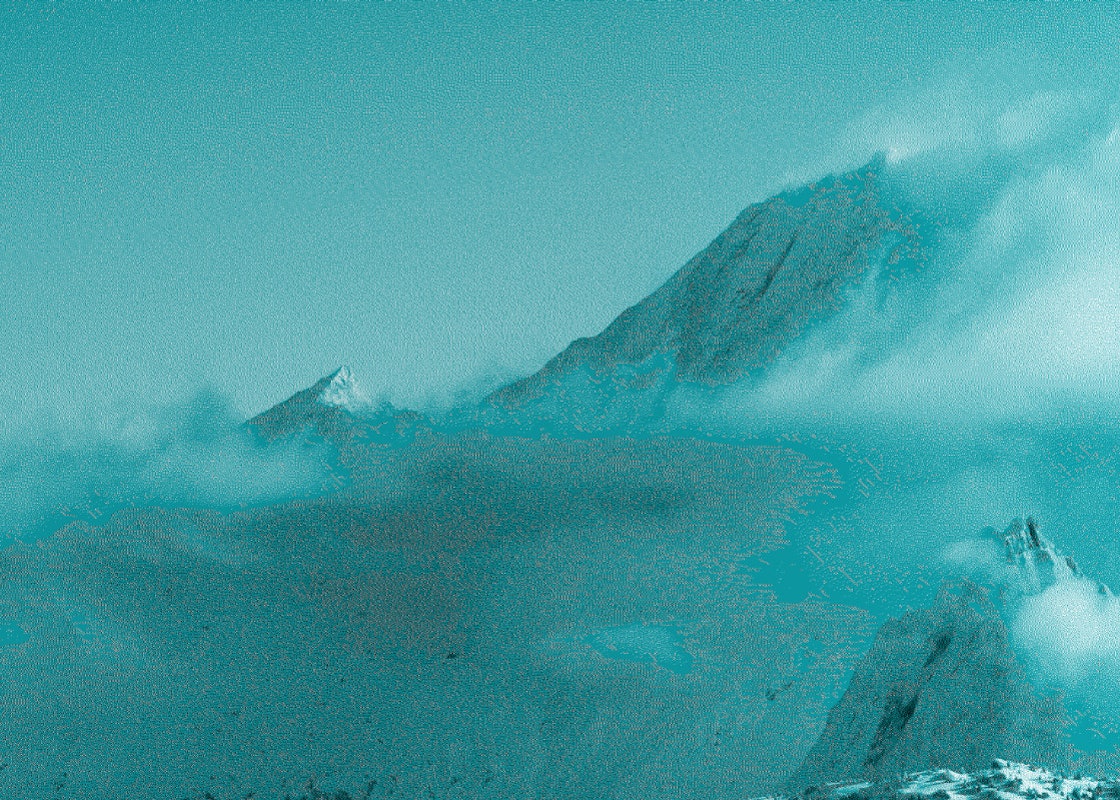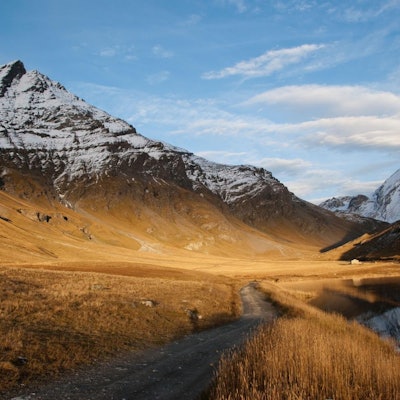
Visit the Vanoise National Park
Vanoise National Park
All you need to know
This summer, the Parc National de la Vanoise celebrates its 60th anniversary. 60 years of action to preserve the fauna, flora, natural heritage and much more. Here's an overview of the park, introducing you to the species you're likely to encounter, its special features and giving you all the keys you need to become a protector of this unique environment!

National Park perimeter
Situated between the high valleys of the Tarentaise and Maurienne, the Vanoise National Park encompasses high mountains, peaking at over 3,000 m, where numerous glaciers still exist, but also wide valleys opening onto easily accessible passes. Sheltered from oceanic rains by the Pre-Alps and the Belledonne mountain range, the massif enjoys a relatively dry, sunny climate.
Department : Savoie
Surface area: Core area: 535 km²
400 km of marked trails
Altitudes in the heartland: 3,855 m (La Grande Casse) to 1,280 m
Joint boundary with Parco nazionale Gran Paradiso: 14 km. At 1,250 km², it is one of the largest protected areas in Western Europe.
A cradle of tranquillity for wildlife
The Marmot, unique to the mountains
The marmot, queen of the Vanoise mountain pastures, is distinguished by its shrill cry, a warning signal you're bound to hear on your walks or hikes. This emblematic animal has made this mountain terrain its preferred territory, which is why it's impossible to see it anywhere else!
In winter, marmots retreat into hibernation for a long period from October to April, when they can be seen emerging from their burrows as the snow slowly melts.
Did you know? Marmots dig three types of burrows: one to shelter the litter during the summer, one to hibernate in, and one for emergency refuge.
Focus on the ibex
It's the star of the Vanoise National Park, since the park was created to save the species, which had fallen victim to hunting.
In France, the population has grown from 60 individuals in the Vanoise to 11,000.
How is this achieved? Thanks to reintroduction initiatives and the implementation of protection and monitoring measures.
The Vanoise National Park is still home to the largest population of ibex in France, numbering some 1,800 individuals. So you've got a real chance of seeing one, in the distance on a ridge, or even closer if you've got a headwind to limit the scattering of scents in its direction!
So what's a chamois?
Originally a forest dweller, the chamois has found itself confined to the mountains as a result of various human activities. Living in herds but smaller than ibexes, they are no easier to spot than their cousin the ibex. In winter, food is scarce, and chamois draw on the fat they have accumulated over the summer. This means that they need a great deal of peace and quiet, and everyone's discreet behavior is essential if these superb mountain gazelles are to see spring again!
The incredible journey of a Bartavelle partridge: 100km in ten days
Since 2017 and the signing of the 3 Vallées convention, park teams have GPS-chipped nearly 180 grouse, 20 ptarmigan, 15 bartavelles and 10 eagles, because better knowledge also means better protection.
So this is the story of Manouche, the male travelling Bartavelle partridge, studied since 2017 as part of the AVIFAUNE 3 Vallées agreement ((Vanoise National Park, ski lifts and communes) and fitted with a GPS chip to trace its route.
And this partridge could well enter the Guinness Book of Records: it covered 97km in just 12 days, from the Méribel peaks to Val d'Isère via the Maurienne!
And as luck would have it, the partridge's name, Manouche, was decided on the day she was captured. Could our guards have had a premonition?
The Bearded Vulture
Eradicated from the Alps by man in the early 20th century after being wrongly accused of attacking flocks and children, the bearded vulture, formerly known as the "Alpine butterfly", has been reintroduced to the Alps since 1986.
Since then, the bearded vulture has made a natural comeback in Vanoise, and there are now eight pairs.
Protective measures are taken during sensitive periods (nesting, egg-laying, hatching...), and every birth is studied!
More about the Bearded Vulture
Would you also like to track protected species? It's here with the Parc National de la Vanoise!
A nature reserve in a park: Tuéda Reserve
The aim of nature reserves is to protect outstanding natural areas and their flora and fauna, and the Parc national de la Vanoise is lucky enough to have 4 of them: the Grande Sassière, the Bailletaz, Tignes-Champagny and the Plan de Tuéda, in Méribel-Mottaret, which you're bound to know if you've ever visited Courchevel and Méribel and summer, so much so that it's a must-see!
Did you know?
The Tuéda reserve was created to compensate for the installation of Mont Vallon, and extends from Lac de Tuéda to the base of the Gébroulaz glacier, covering a surface area of 1,112 hectares. 545 plant species and around 400 animal species are listed here, favored by a variety of natural habitats: grasslands, forests, rocky habitats, wetlands and aquatic environments, moors. This diversity of environments, reinforced by differences in exposure, soils and rocks, results in a diversity of fauna, flora and landscapes. In addition to the flora and fauna that can be found elsewhere in the park, the cembro pine forest makes this a remarkable place, and was the reason for the creation of the reserve.
Best practices
To respect wild nature!
🐶 No doggies
Even when leashed or carried, no matter how small, dogs are forbidden. Why not? For the tranquillity and health of the wild animals, imagine the poor little marmots disturbed by Kiki's barking... But don't worry, in Courchevel you've got plenty to do in terms of superb walks, even outside the park.
🌼 No edelweiss for the house
Oh the beautiful hairy edelweiss or how about this magnificent wild orchid! Yes, but they're a protected species... Look at them with your eyes, take photos of them... But leave them there, at home they'd end up withering anyway.
🗑️ What goes up, comes down - the law of gravity for garbage cans
It's basic, but vital for maintaining a balance in our mountains (and it's also true in your everyday life): don't throw anything into nature and keep your garbage until you find a garbage can - logically, it won't weigh any more than it did on the way up!
Plastic, glass, packaging, cardboard, paper... Don't forget to recycle when you return to the valley.
See any garbage on the trail? Instead of just grumbling, don't hesitate to pick it up - nature will be all the better for it.
🔥 It's not Saint John's Day here!
Fires are forbidden to avoid the risk of fires, soil degradation and to preserve the habitat of many species.
🐻 Wise even, no treats for our wild friends
And no, groundhogs don't like chocolate... Animals simply have a different diet to us and leaving them our little leftovers, even biodegradable ones, could upset their metabolism. Keep them with you so you can throw them away as soon as you find a garbage can!
⛺ The stars rather than canvas tents
In the Vanoise National Park, bivouacking is conditionally permitted. On the other hand, camping with tent and equipment set up for the day is forbidden, so as not to create too great a disturbance for our wild friends and also to conserve the beauty of the sites.
🦅 What if we stayed old-school, without drones?
Imagine a lammergeier's head in full flight, encountering a drone... A bit disturbing, isn't it?
With its impact on the peace and quiet of the area, drones are forbidden in the park!
It's up to you to climb higher for a bird's-eye view 😊
🚲 Put away your shorts
You won't need a chamois to mount your two-wheeled friend here, as riding is forbidden. You can discover the Park on foot, and you know what? It leaves you time to look around and enjoy all the macro species you don't see when you're on your bike!
⛰️ Trails are no place for wild boar
A few seconds saved and a few hundred flowers crushed... Too bad, you've got the time and there are trails specially cut for your little feet, so you might as well make the most of them!
Access to the National Park from la Vanoise
From Méribel
On foot, from below:
2 solutions from Méribel-Mottaret
- From Lac de Tuéda and the nature reserve - you enter the park at the top of the steep ascent, when you discover the great Plagne plateau below the Aiguille du Fruit.
- From the Pierre et Vacances residence and the Ramés trail: a more original itinerary, in the forest, on a sublime little path. Arriving just above the Plagne plateau, descend around a wetland, then cross the river to reach the main trail.
With the lifts, from above:
Take the Pas du Lac gondola up to the summit to access the Vanoise National Park from above. Follow the crests of the Aiguille du Fruit and descend to the Plagne plateau, the Lac des Fées and, higher up, the refuge du Saut. A changing itinerary with no climbs, so you won't get too sweaty!
Summer lift times and rates


